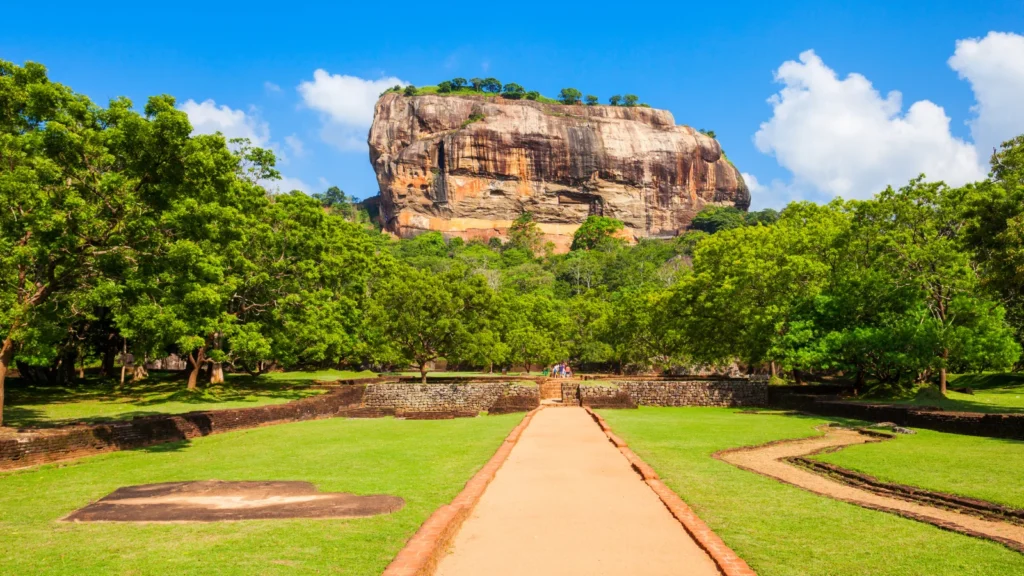
Sigiriya
Sigiriya is an ancient rock fortress in central Sri Lanka, built by King Kashyapa I around the 5th century AD. It features a massive granite rock with royal gardens, frescoes, and impressive water engineering. The site served as a palace, fortress, and later a Buddhist monastery. Its stunning frescoes and the polished Mirror Wall with ancient inscriptions highlight its cultural significance. Sigiriya is a UNESCO World Heritage Site and a major tourist attraction, reflecting Sri Lanka’s rich history and architectural ingenuity.
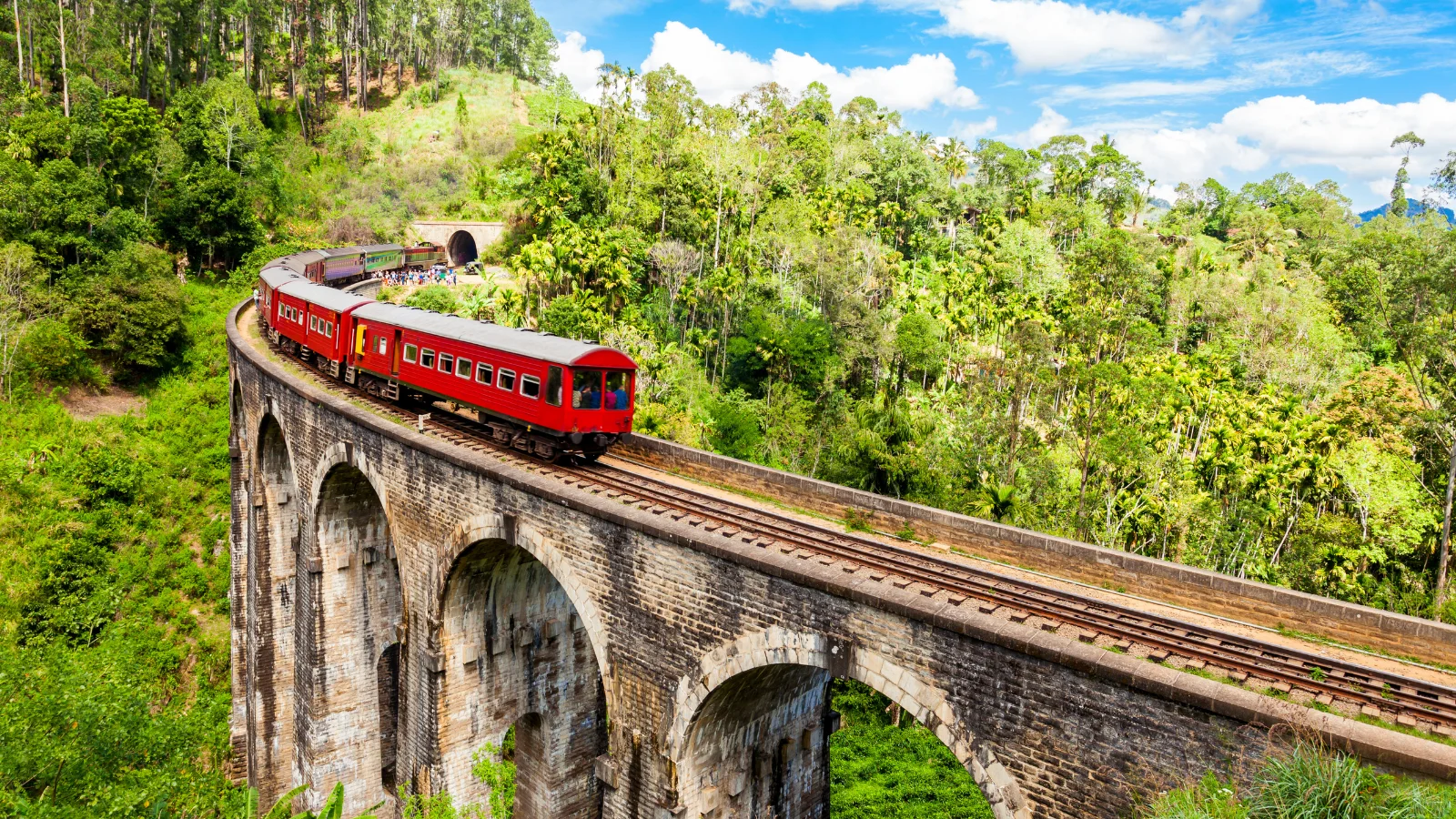
The Nine Arch Bridge
The Nine Arch Bridge in Demodara, Sri Lanka, is a remarkable stone railway bridge built during British colonial times. Completed in 1921, it spans 91 meters and stands 24 meters high, famously built without steel. Local craftsmen used traditional masonry after steel was diverted in World War I. The bridge curves gracefully through lush tea plantations, combining colonial engineering with local skill. Today, it’s a beloved tourist spot admired for its architectural beauty and scenic surroundings.
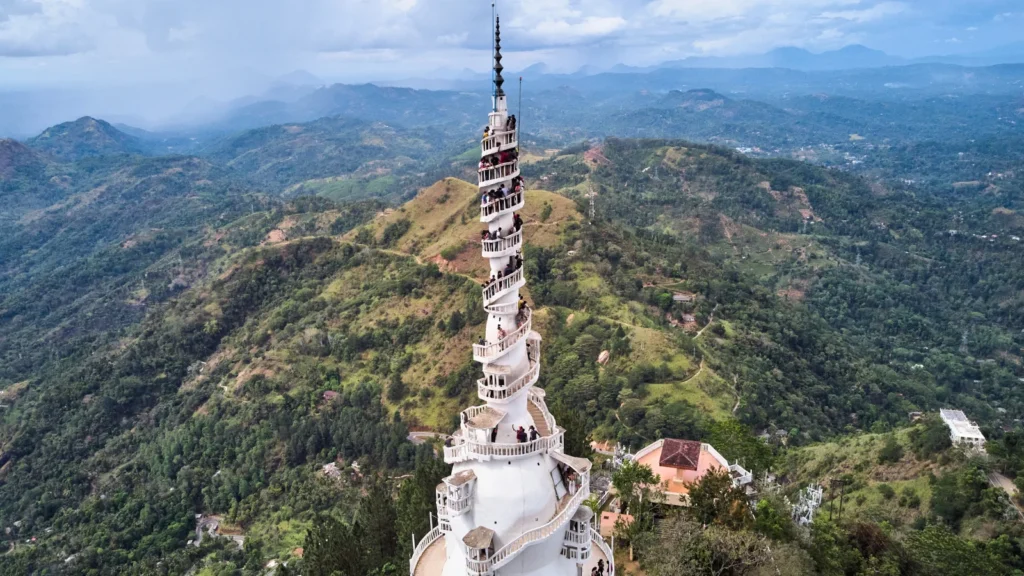
The Ambuluwawa Tower
Ambuluwawa is a mountain near Gampola, Sri Lanka, featuring a unique multi-religious tower that honors Buddhism, Hinduism, Islam, and Christianity. Rising over 1,000 meters, it offers panoramic views of the region. The site also includes a botanical garden with diverse plant species, including rare medicinal plants. Designed to promote religious harmony, Ambuluwawa blends natural beauty, cultural diversity, and biodiversity, making it a significant landmark celebrating unity and ecological conservation.

Nuwara Eliya
Nuwara Eliya, nicknamed “Little England,” is a cool hill station in Sri Lanka’s central highlands. Established by the British, it features colonial architecture, tea plantations, and beautiful gardens. Its temperate climate provides a refreshing escape from the tropical heat. Visitors enjoy attractions like Lake Gregory, botanical gardens, and golf courses. The city’s scenic hills and historical charm make it a popular destination for both relaxation and cultural exploration.
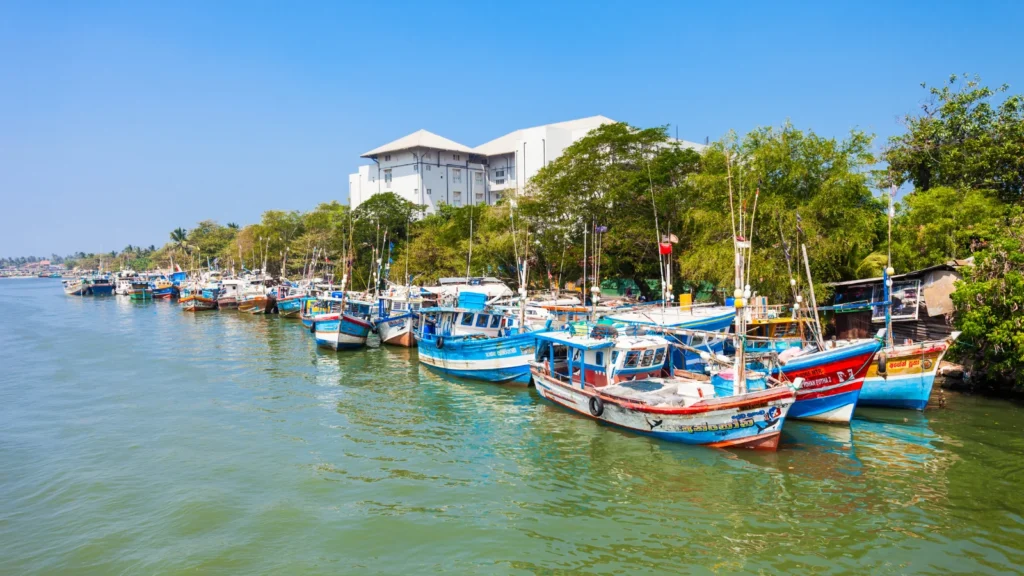
Negombo
Negombo is a vibrant coastal city near Sri Lanka’s main airport, known for its lively fishing industry and beautiful beaches. It reflects Portuguese colonial heritage with many churches, earning the nickname “Little Rome.” Negombo’s lagoon and fish markets showcase local life, while its diverse communities contribute to a rich cultural mix. The city blends historic charm, natural beauty, and modern amenities, attracting tourists and locals alike for its relaxed atmosphere and coastal attractions.
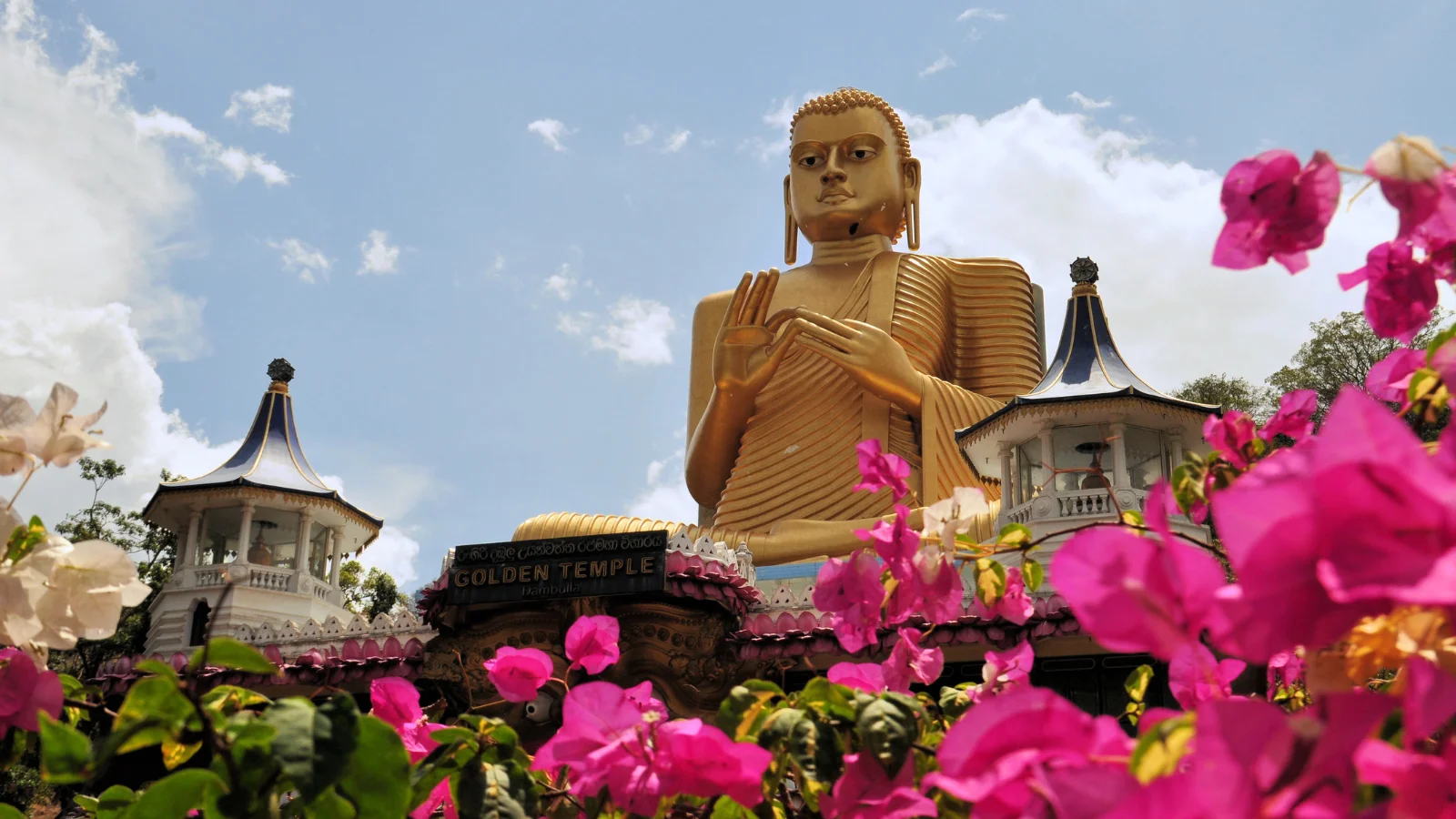
Dambulla
Dambulla is famous for its Golden Temple, a series of ancient cave temples carved into a massive rock. Dating back to the 1st century BCE, it contains Buddha statues, murals, and Hindu deities. King Valagamba built it after a period of exile. Surrounding areas have archaeological sites showing ancient civilizations. The site remains a significant religious, cultural, and historical destination in Sri Lanka, attracting pilgrims and tourists interested in spirituality and heritage.
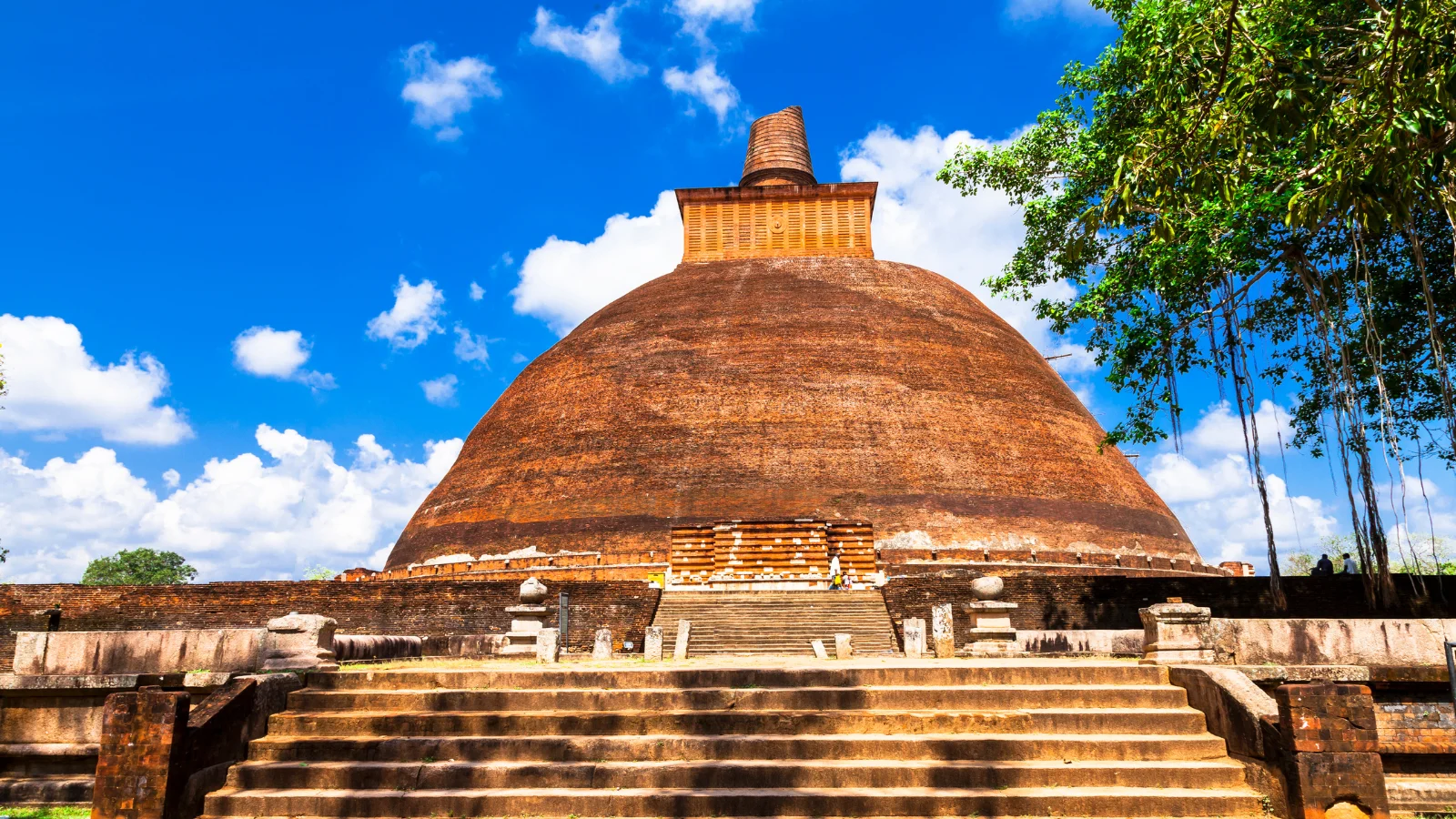
Anuradhapura
Anuradhapura is an ancient capital of Sri Lanka, known for its extensive ruins that include stupas, palaces, and irrigation systems. Founded in the 5th century BCE, it was a major center for Theravada Buddhism, housing the sacred Bodhi tree. The city’s impressive architecture and religious significance earned it UNESCO World Heritage status. Anuradhapura offers insights into Sri Lanka’s early civilization, making it a vital pilgrimage and historical site.
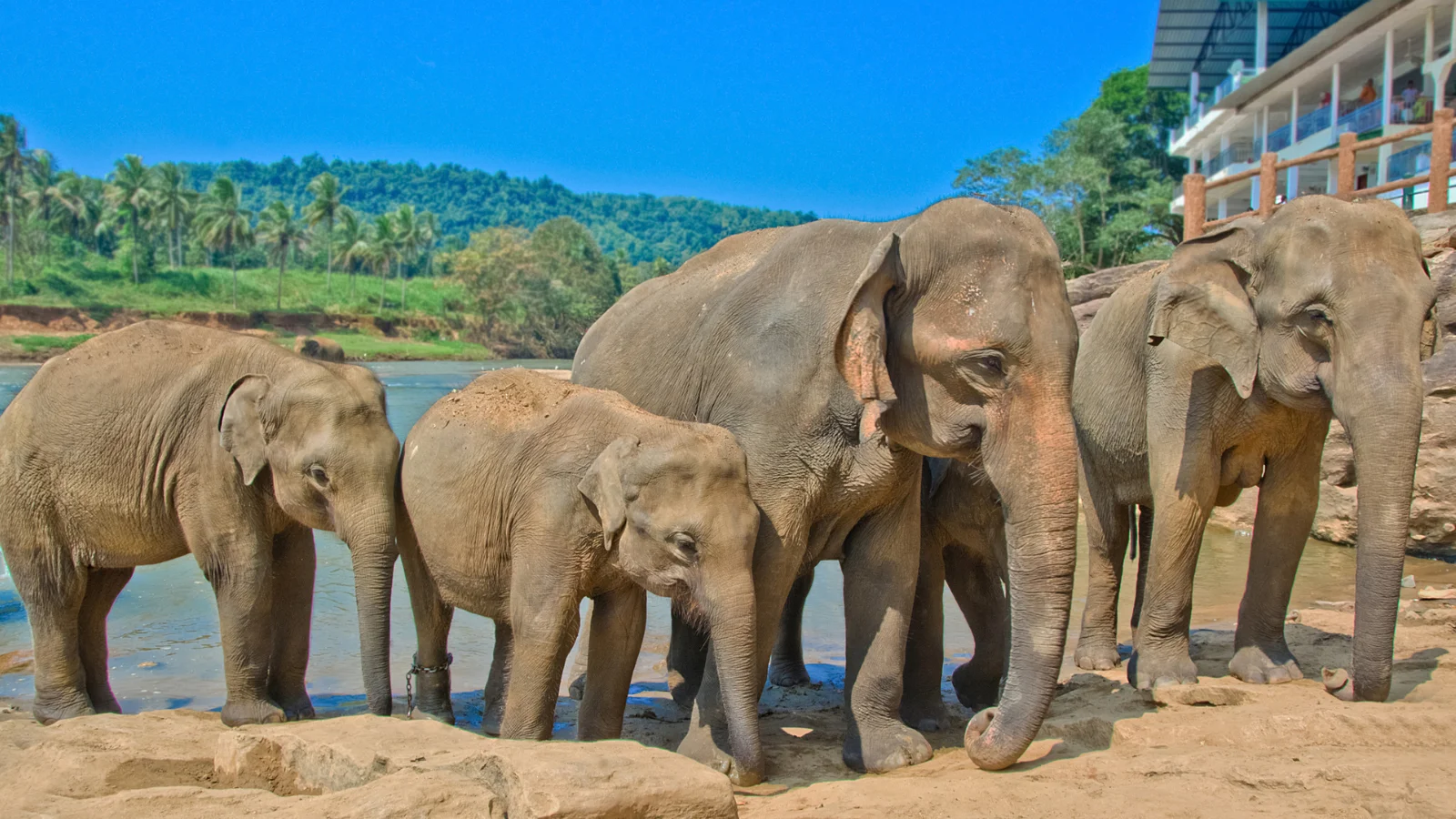
Pinnawala
The Pinnawala Elephant Orphanage, founded in 1975 by Sri Lanka’s Wildlife Department, is a sanctuary caring for orphaned and injured elephants. Located on 25 acres in Pinnawala village, it houses the world’s largest captive elephant herd, starting from just five calves to over 70 elephants today. The orphanage provides a natural environment with daily feeding, medical care, and bathing in the Maha Oya River. Since launching a successful breeding program in 1982, many calves have been born here. Pinnawala is a popular tourist spot, offering close elephant encounters while promoting conservation. It plays a vital role in protecting Sri Lanka’s endangered Asian elephants and educating visitors on wildlife preservation.

The Temple of the Tooth
The Temple of the Tooth Relic, or Sri Dalada Maligawa, in Kandy is a sacred Buddhist temple in Sri Lanka. It safeguards the tooth relic of Buddha, brought to Sri Lanka in the 4th century CE for protection. The relic represents royal power and was historically linked to legitimate rule. The temple complex features unique Kandyan architecture, including a two-story shrine surrounded by a moat, where the relic is housed. Beyond its religious importance, it is a cultural hub hosting the grand Esala Perahera festival every year. As a UNESCO World Heritage Site, it draws many devotees and tourists for its deep spiritual and historical value.

The Peradeniya Botanical Garden
The Peradeniya Botanical Garden near Kandy boasts over 4,000 plant species, including rare orchids and medicinal plants. Originating as a royal garden centuries ago, it was formalized by the British in the 19th century. The garden covers about 147 acres with scenic avenues like the famous palm avenue. It plays an essential role in botanical research and conservation. Visitors enjoy tranquility amid diverse flora, making it one of Sri Lanka’s premier botanical sites.
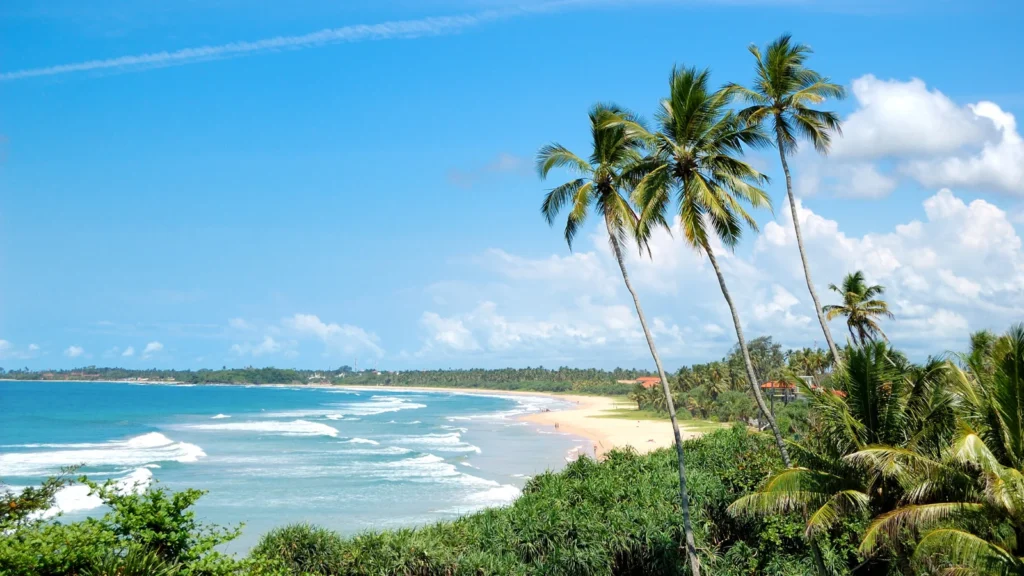
Bentota
Bentota is a coastal town known for its beautiful beaches and water sports activities. Located on Sri Lanka’s southwest coast, it features golden sands and palm-lined shores. Historically a Portuguese fort site, it has grown into a popular resort destination with luxury hotels designed by Geoffrey Bawa. Bentota offers river safaris, cultural sites, and seafood cuisine, blending relaxation and adventure in a tropical setting.
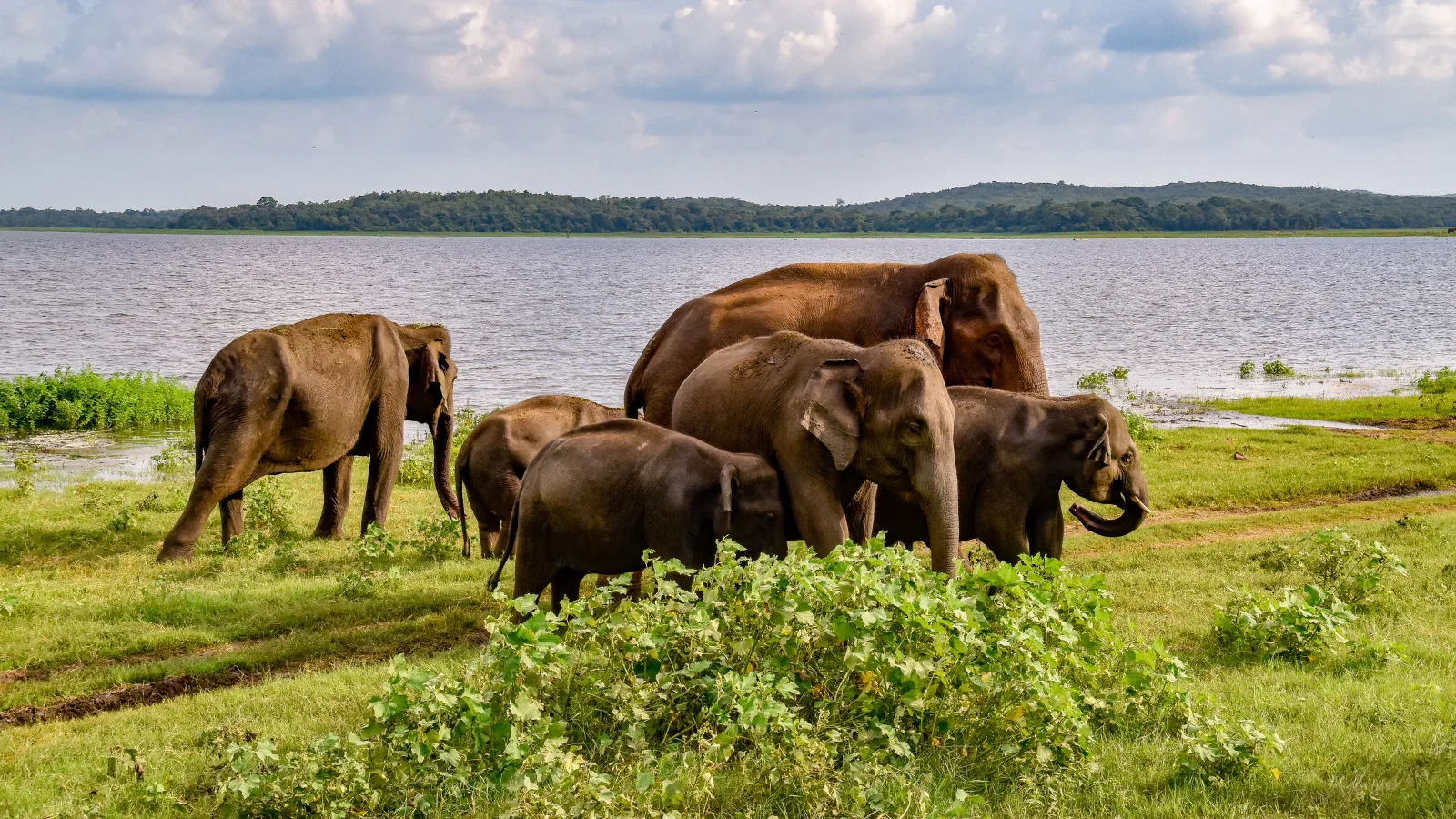
Udawalawe National Park
Udawalawe National Park protects a rich variety of wildlife across diverse habitats, including forests and wetlands. Established in 1972, it safeguards elephants displaced by a reservoir. Famous for its large elephant herds, the park also hosts deer, leopards, and many bird species. Its scenic landscapes and accessible safaris make it a favorite for nature lovers and wildlife photographers visiting Sri Lanka.
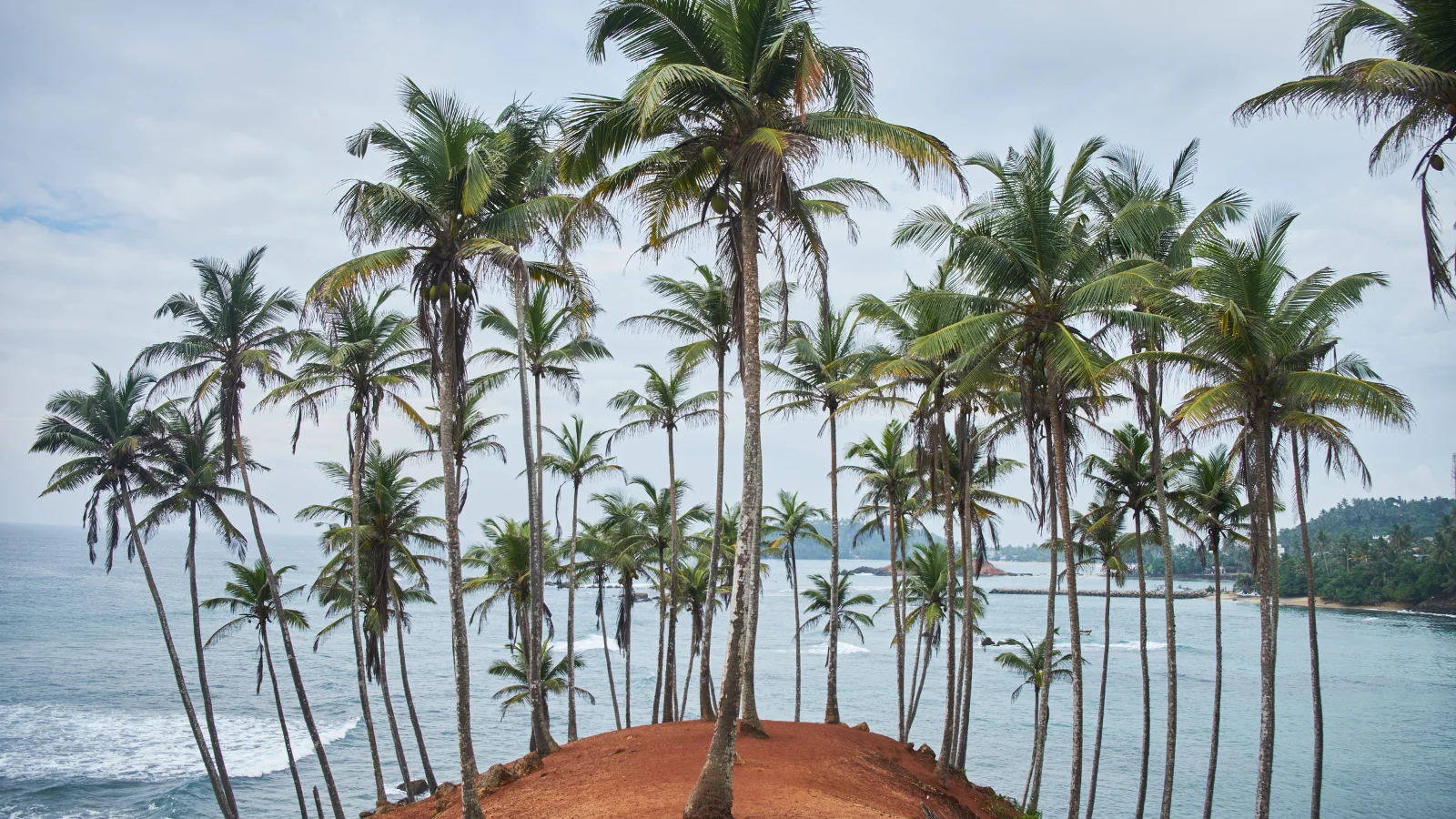
Mirissa
Mirissa is a picturesque beach town on Sri Lanka’s southern coast renowned for its crescent-shaped bay and marine life. It’s famous for whale watching, especially from November to April. Its calm waters are ideal for swimming, snorkeling, and surfing. The town offers a relaxed vibe with beachside cafes and restaurants serving fresh seafood. Nearby natural spots like Parrot Rock enhance its appeal, making Mirissa a top destination for both leisure and adventure.
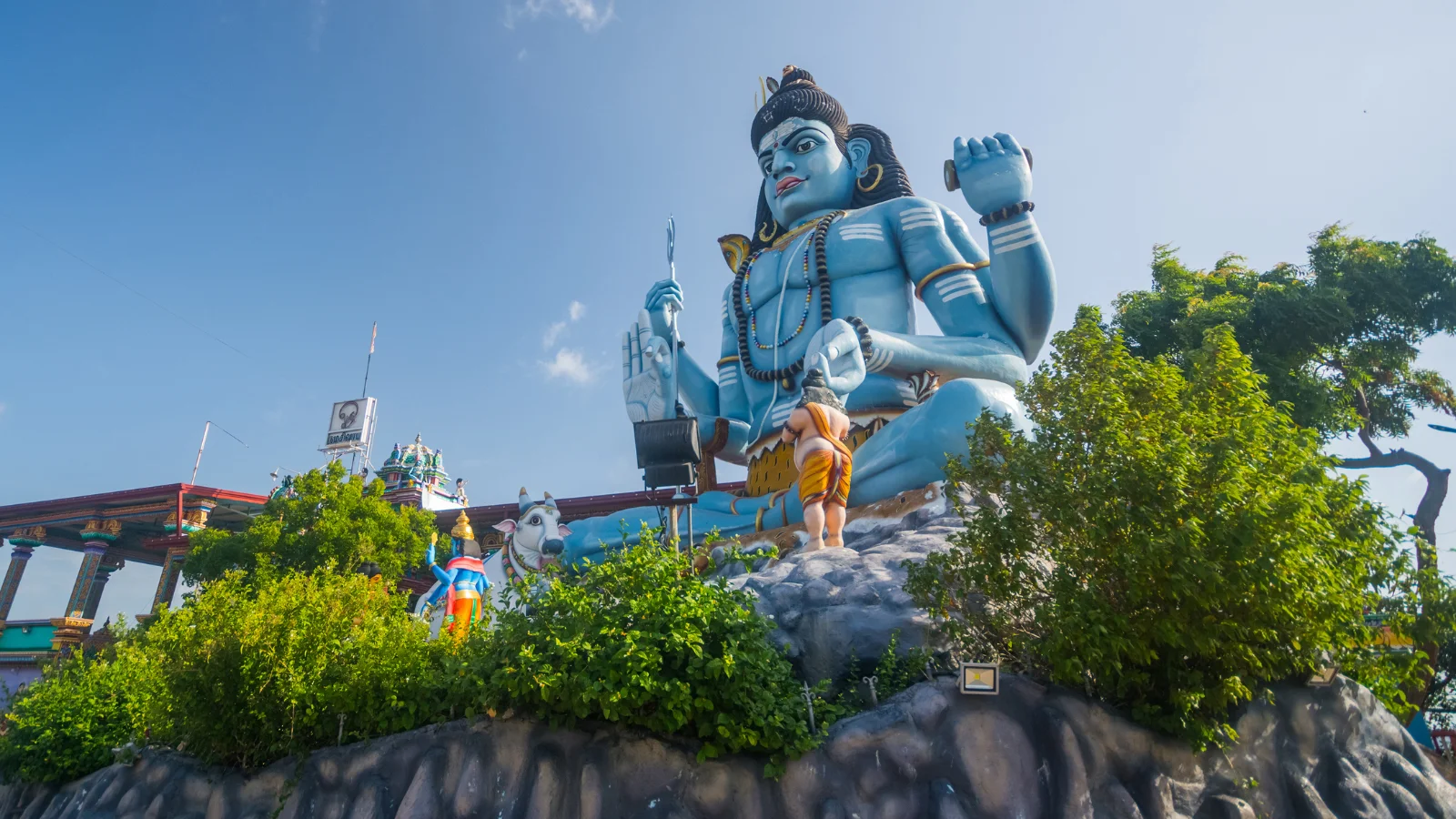
Koneswaram Temple
Koneshwaram Temple in Trincomalee is a historic Hindu shrine dedicated to Lord Shiva. Positioned on a cliff overlooking the Indian Ocean, it’s one of ancient Sri Lanka’s five Pancha Ishwaram temples. Dating back over 2,000 years, the temple combines traditional Dravidian architecture with stunning sea views. It was rebuilt after destruction during Portuguese rule and remains a vital spiritual and cultural site for Hindu worshippers and visitors alike.
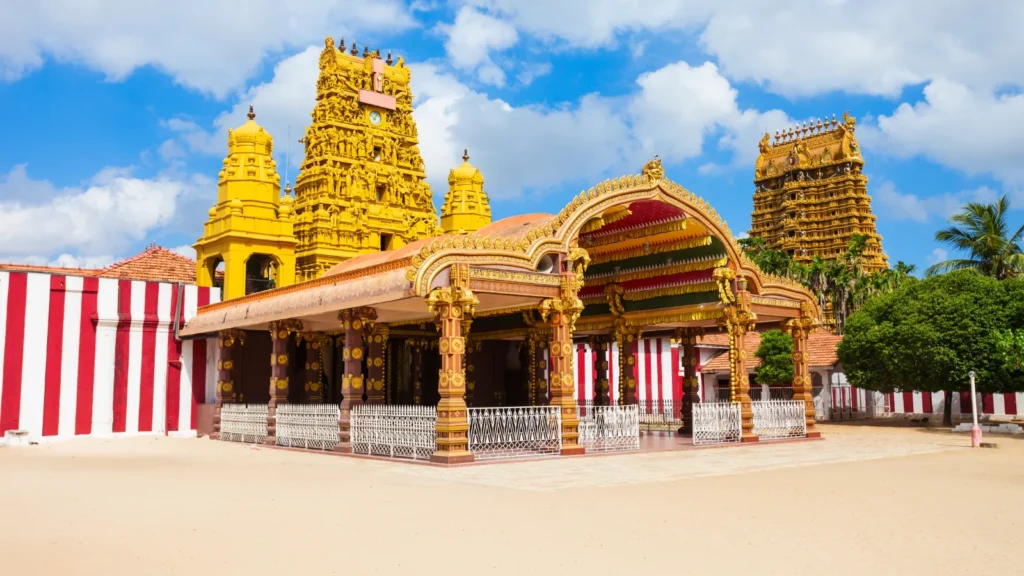
Munneswaram Temple
Munneswaram Temple near Chilaw is an ancient Hindu temple complex dedicated to Lord Shiva. Revered as one of the Pancha Ishwarams, it has stood for over a thousand years. Despite Portuguese destructions, it was rebuilt by local devotees. Linked to the Ramayana epic, it’s believed King Rama prayed here after his victory. The temple hosts vibrant festivals like Navarathri and Shivaratri and symbolizes religious unity in a diverse community.

